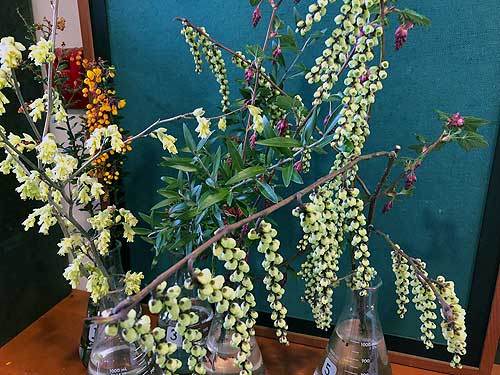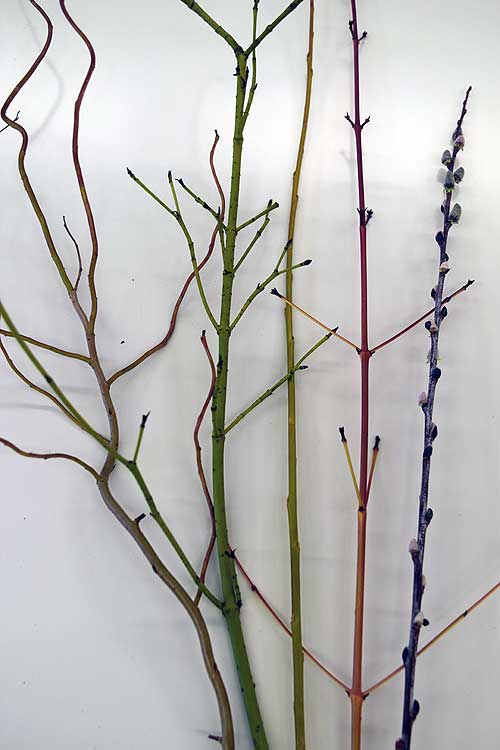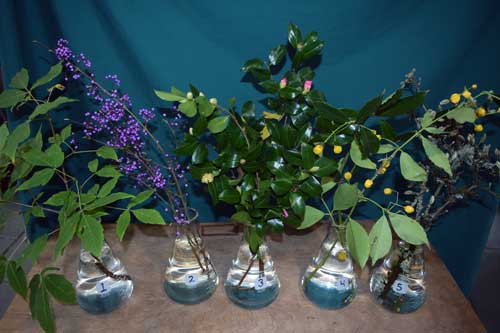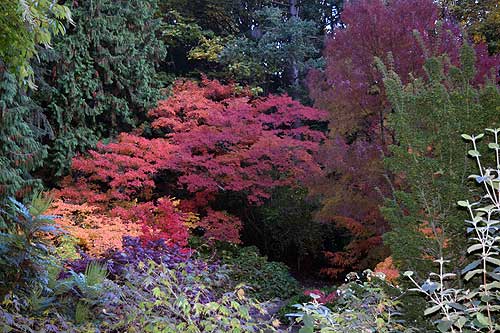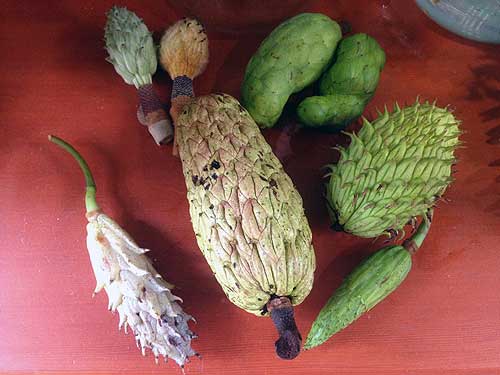1) Berberis darwinii Darwin’s Barberry This barberry was discovered in Chile by Charles Darwin in 1835 during his voyage on the Beagle. Located in the Chilean entry garden of the Pacific Connections Garden, the red-tinted flower buds open to bright yellow-orange flowers. The abundant summer fruit of this barberry is sweet and delicious as opposed to our native sour barberries (mahonias).
Read more »First to Flower in March
1) Forsythia ovata Korean Forsythia This genus is named in honor of Scottish botanist William Forsyth. Forsyth was a founding member of the Royal Horticulture Society in England. A short and spreading deciduous shrub that is popular in gardens and yards for its early spring display of bright yellow flowers. These are planted throughout the park, but can be enjoyed walking down Azalea Way.
Read more »Requiem for Two Oaks and a Southern Beech
“So if you’re travelin’ in the north country fair Where the winds hit heavy on the borderline Remember me to one who lives there She once was a true love of mine.” – Bob Dylan Three significant tree collections succumbed to frigid north winds this past weekend. These cuttings pay homage to their past lives. 1) Nothofagus pumilio Lenga Beech in Mapuche language (Grid 49-2E) This Chilean deciduous tree from the Andes (accession 637-70*A) was received as a whole plant from Edinburgh Royal Botanic Garden in 1970.
Read more »Colorful Willows and Dogwoods for Winter
1) Salix ‘Swizzlestick’ Corkscrew Willow Thrives in wet locations and is salt tolerant. Orange-yellow young twigs that have a corkscrew growth pattern Cut back hard in spring to promote attractive new branches. 2) Cornus sericea ‘Flaviramea’ Yellow Twig Dogwood Medium to large, deciduous shrub Bright yellow-green young twigs easily grown in medium-to-wet soils in full sun or part shade. Species native to North America (excluding lower mid-west and deep south) 3) Salix alba ‘Britzensis’ Coral Bark Willow Fast growing to 80 feet tall, but may be coppiced each spring.
Read more »Color in Winter at the Washington Park Arboretum
1) Sarcococca hookeriana var. digyna Sweet Box Evergreen, rhizomatous, suckering shrub Purplish stems with narrowly lanceolate, mid-green leaves and clusters of small, creamy-white, fragrant flowers Native to western China 2) Hamamelis mollis Chinese Witch Hazel Medium-to-large, deciduous shrub Fragrant yellow flowers often with a red base, with four ribbon-shaped petals that grow in clusters Native to central and eastern China 3) Daphne bholua ‘Jacqueline Postill’ Bhulu Swa, Nepalese Paper plant Evergreen shrub Leathery leaves and deep pink flowers with a powerful fragrance Native to the Himalayas and neighboring mountain ranges from Nepal to southern China 4) Garrya elliptica ‘James Roof’ Silk Tassel Evergreen shrub to small tree Yellowish-colored, male catkins that dangle 12″ or more from the ends of the branches in winter to early spring and turn gray as they age.
Read more »Fine Fall Food for Our Feathered and Feelered Friends
1) Arbutus unedo Strawberry Tree Arbutus unedo specimens can be found surrounding the courtyard on the south side of the Graham Visitors Center. As the fruit requires 12 months to ripen, both flowers and ripe fruit are present in the fall for an excellent display as well as food for both pollinators and other wildlife. Varied thrush visit our courtyard in the winter to take advantage of the dense cover and fruit.
Read more »Fall and Winter Interests at the Washington Park Arboretum
1) Acer triflorum Three-flowered Maple This is a small to medium-sized tree, native to northeastern China and Korea. Exfoliating bark, three leaflets, and amazing fall color are some highlights of this tree. Look for this tree, with one of the last displays of fall color for the season, in the Asiatic Maples collection. 2) Callicarpa bodinieri Beautyberry Most species in the genus, including this one, come from eastern and southeastern Asia, although this species can be found in Australia, Madagascar, North America, and South America.
Read more »A Fall Color Extravaganza is Happening in the Woodland Garden!
Don’t delay, get your free “leaf peeper” tickets today! See the most beautiful fall color show in Seattle. Located in Woodland Garden on the south-facing slope (north side of Upper Pond). And the star performers are: 1) Acer palmatum ‘Ogon sarasa’ A Japanese maple cultivar whose name means “gold calico cloth”. This shorter-statured large shrub is in the lower right foreground when viewing scene from the south side of Upper Pond.
Read more »West Side Story
1) Cedrus atlantica ‘Aurea’ Native to the Atlas Mountains of Morocco and Algeria, C. atlantica ‘Aurea’ is a slow-growing, conical tree with golden yellow foliage. As the tree matures, its needles turn to a greener color. Atlas cedars can grow to 120 feet in height, but this cultivar tops out at about half that. A member of the Pinaceae (Pine family), this specimen is located in the north Pinetum near 26th Avenue East and East McGraw Street.
Read more »Summer Fruit from the Washington Park Arboretum
1) Corylus colurna Turkish Hazel This native of SE Europe produces edible nuts inside intricately beaked husks. This Corylus and other Birch Family members can be found near the terminus of Foster Island Road. 2) Dipteronia sinensis Dipteronia is a member of the soapberry family, Sapindaceae, which also includes Acer or maples, another winged-fruited genus. As fall approaches, the fruit of Dipteronia will continue to ripen to a reddish-brown color.
Read more »